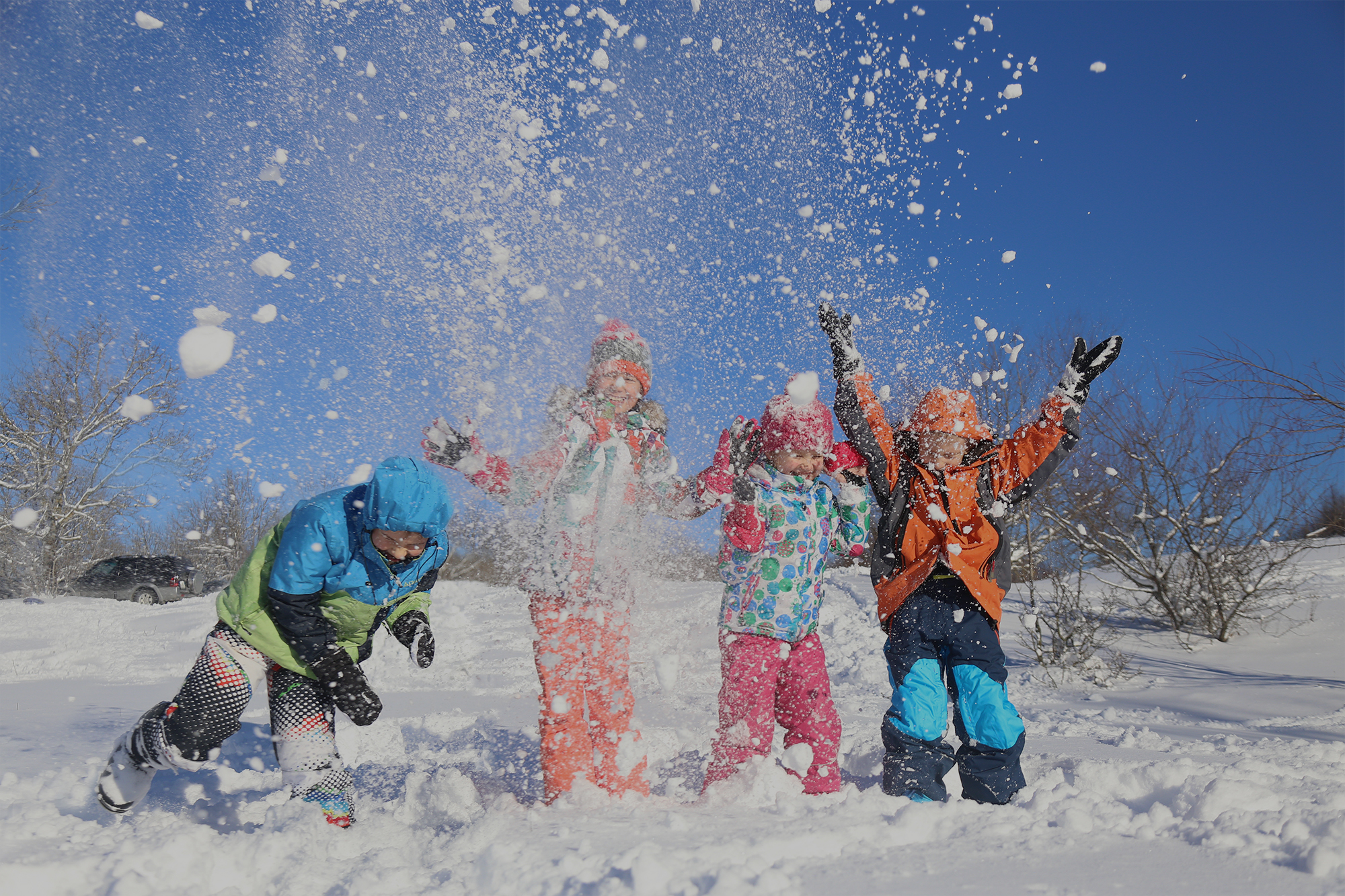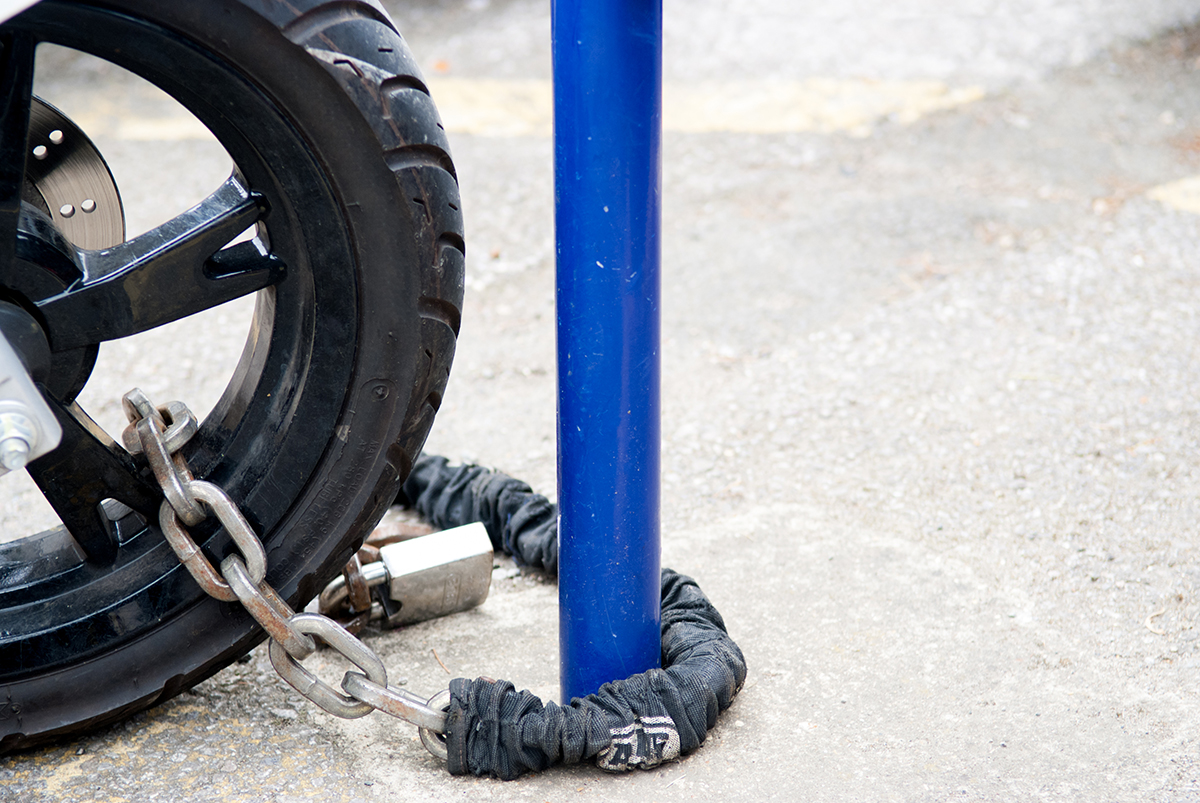Help your little ones stay warm, safe, & focused on fun with these winter safety tips
Not even the bitter cold can stand in the way of playtime. But a scrape, fall, or overexposure to the cold can ruin your little one’s day—or worse. To preserve the sanctity and fun of their snow days this year, follow these tenets of snow safety for kids.
Hypothermia & Frostbite: Know What to Look for
When your children play outside in the cold, your first priority should be to prevent overexposure. If they lose too much body heat, they could develop hypothermia or frostbite, both of which can be life-threatening.
Before you gear up for playtime, check the temperature, wind chill, and forecast for the day. If there’s bad weather on the way, take the safe road and wait it out before letting the little ones loose. If the coast is clear, make sure you know what to look for in case they start to show symptoms of overexposure.
To spot hypothermia, see if your child is shivering, feeling sluggish or confused, clumsy, or slurring their words. If their skin starts to hurt, feels like it’s burning, goes numb, turns gray or white, or develops blisters, you’re dealing with frostbite.
What to Do if They Show Signs of Hypothermia or Frostbite
If you notice the above symptoms, bring them inside to the warmth as soon as possible. If they have any wet clothes on, change them into a dry set, bundle them up with blankets, and give them something warm to sip on.
If any toes, fingers, feet, or hands show signs of frostbite, fill up a container with warm water (don’t use hot water) and have them soak the affected area for twenty to thirty minutes. If their ears, nose, or lips are affected, soak a rag or washcloth with warm water and apply for the same amount of time.
Staying Warm
Snow safety for kids is all about preparation. In addition to checking the weather, make sure they’re suited up with plenty of warm layers and gear before they head outside.
Opt for water-resistant or waterproof jackets and pants to keep their inner layers from getting damp, and complete the ensemble with gloves, ear muffs or beanies, winter socks, and snow shoes to protect the areas that are more vulnerable to the cold.
Another key to helping your kids stay warm is to ensure they’re hydrated. When it’s cold out, our sweat evaporates before we even realize it and our bodies’ natural urge to drink can lessen by up to 40%. Regular breaks to drink something warm will not only help stave off dehydration, but also give you a chance to bring them back inside and out of the cold for a short while.
Don’t Forget the Sunscreen
Yes, sunburns and skin damage are still risks in the winter. Sunlight easily reflects off the white, shimmering snow, which can burn any exposed skin. So, make sure they apply sunscreen on their faces or any other uncovered areas and reapply regularly.
Playing in the Snow
If you’re not joining in on the frosty fun yourself, keep an eye on things to ensure the kids are playing safely and taking regular breaks. Snowball fights and snowmen are staples of winter playtime, but large snow forts or igloos can easily collapse and trap small children inside, so try to avoid them or keep them small enough to where they don’t pose a threat.
A good pair of snowshoes can reduce the risk of slips and falls, but they can only do so much on super slick ice, so avoid icy surfaces and inclines whenever possible.
Also, if you’re exploring a hiking trail or public park, stick to designated trails and areas to steer clear of ice, deep patches of snow, and other potential hazards.
Winter Sports & Activities
If you’re venturing beyond the backyard this winter, chances are you’re looking to bring the kids along for some classic winter activities, like sledding, ice skating, and skiing/snowboarding. Below, we’ve listed general safety tips to help prevent accidents and injuries for each:
- When sledding, make sure your child:
- Wears a ski helmet (bike helmets aren’t built to withstand as much force and are much more breathable, which can let cold air in).
- Stays either sitting or kneeling to reduce the risk of head injuries.
- Has a clear path that’s far from any sidewalks, bike paths, or roadways.
- Doesn’t sled down steep hills.
- When ice skating, make sure your child:
- Wears a ski helmet.
- Wears a comfortable and supportive pair of skates.
- Skates on man-made rinks rather than bodies of water whenever possible. If you do skate on a lake or pond, make sure the ice is at least four inches thick, check for any signs that designate skating safety, and make sure they never leave your sight.
- Takes regular breaks to rest and hydrate.
- When skiing/snowboarding, make sure your child:
- Wears a ski helmet, wrist guards, and knee pads.
- Is always under you or your partner’s supervision.
- At least takes a beginner class or two from an approved instructor.
- Stays away from large crowds of other skiers/snowboarders.
- Sticks to trails appropriate to their skill level.





